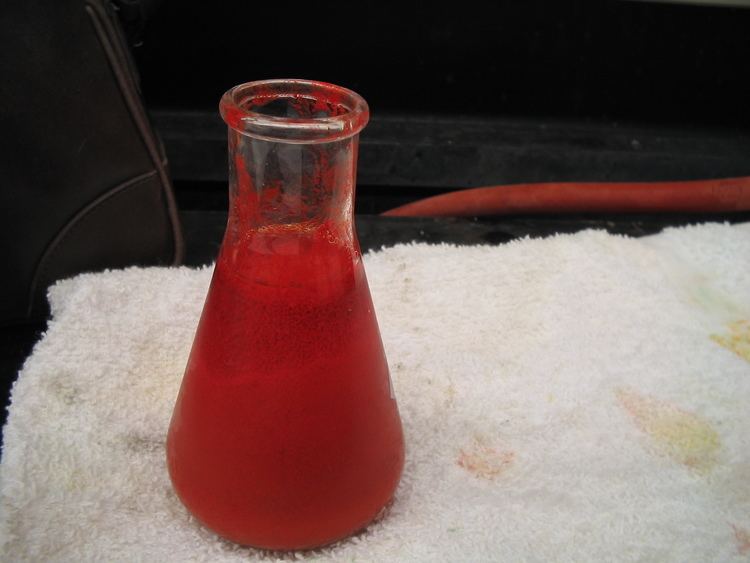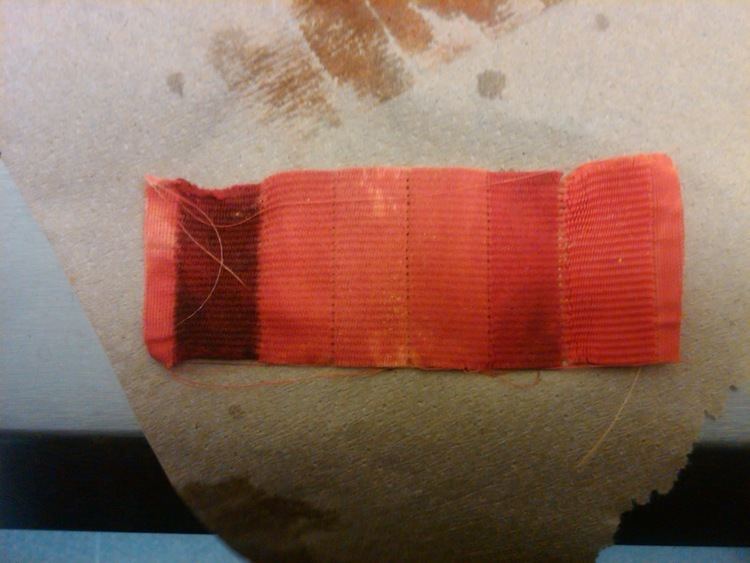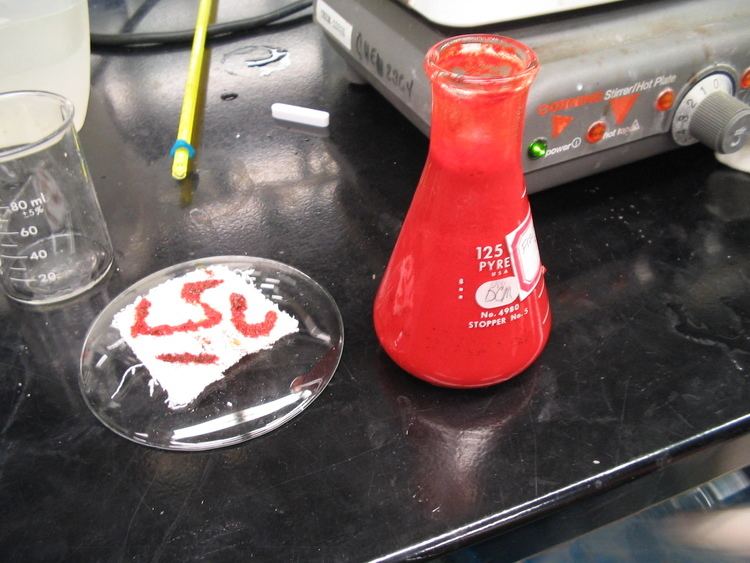Formula C16H11N3O3 | Appearance Red solid | |
 | ||
Synthesis of para red
Para Red (paranitraniline red, Pigment Red 1, C.I. 12070) is a chemical dye. Chemically, the dye is similar to Sudan I. It was discovered in 1880 by von Gallois and Ullrich, and was the first azo dye. It dyes cellulose fabrics a brilliant red, but is not very fast. The dye can be washed away easily from cellulose fabrics if not dyed correctly. Acidic and basic stages both occur during the standard formation of Para Red, and acidic or basic byproducts may be present in the final product.
Contents

Synthesis
Para Red is prepared by diazotisation of para-nitroaniline at ice-cold temperatures, followed by coupling with β-naphthol:
UK food alert
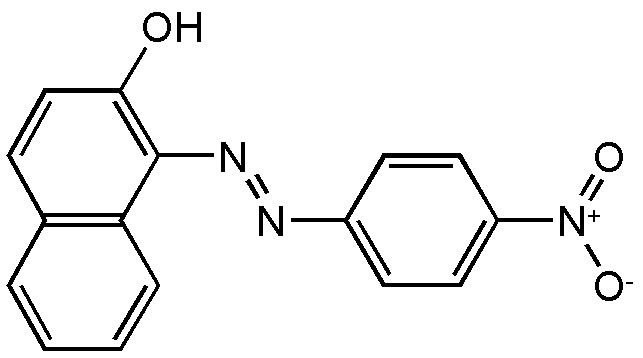
In the United Kingdom, the dye is not permitted in food. The UK's Food Standards Agency (FSA) stated that "the Agency’s independent scientific experts have advised that, although there are very limited data available, it would be prudent to assume that it could be a genotoxic carcinogen".
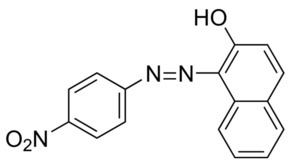
On 21 April 2005, the FSA announced that some batches of Old El Paso dinner kits had been contaminated with the dye, and issued an alert. Also, reported on the 5 May 2005, the dye was found in 35 products which have now been taken off supermarket shelves. The products were mainly cooking sauces, though some are also spices.

